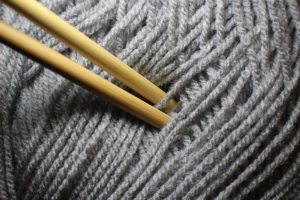
In addition to my work with Beton, I teach technical writing as part of a two-semester capstone course in the School of Engineering at the University of St. Thomas in St. Paul, MN. Each student team has a client, usually someone from a local company or municipality, with a specific problem that needs a solution. The students determine what the client wants, translate that into engineering design criteria, brainstorm potential solutions, select one, and then design, build, and test it. For some projects, sustainability is the client’s primary concern. For others, it’s almost an afterthought. Either way, the students’ final report includes a societal analysis—that is, a discussion of how their project affects the broader community. Naturally sustainability is an important part of that discussion.
However, societal analysis is about more than sustainability. Beginning in the 2019-2020 academic year, the ABET criteria for student outcomes require that engineering students must demonstrate “an ability to apply engineering design to produce solutions that meet specified needs with consideration of public health, safety, and welfare, as well as global, cultural, social, environmental, and economic factors.”
The United Nations has a list of 17 sustainable development goals, among them clean water and sanitation, affordable and clean energy, decent work and economic growth, and responsible production and consumption. These goals can give the students a framework for understanding how their work affects the world beyond their client.
Minimizing waste
To illustrate the point, let’s look at how a company called Erdaine produces sweaters with sustainability in mind. One way they do this is by minimizing waste in production. For example, they don’t maintain an inventory of sweaters, but instead knit them on demand.
Instead of knitting the fabric and cutting and sewing the pieces together, they knit the sweater as a seamless whole. That eliminates scraps of knitted fabric. While they do their best to eliminate defects in production, if they do produce a defective sweater they can simply unwind it and reuse the yarn.
When they ship the sweater to the customer, the packing contains no plastic—only paper that is easy to recycle.
The styles and colors are classic and appealing, so you can wear them year after year. However, when it’s time to discard them the natural-fiber yarns are biodegradable.
Sustainability throughout the supply chain
Naturally, Erdaine does not herd sheep, grow flax, or spin yarn. But they do take responsibility for sustainability throughout their supply chain. Their yarns come from Europe and are certified to meet Standard 100 by Oeko-Tex.
Manufacturing in British Columbia means that the electricity supplied to the factory is mainly derived from hydro power.
Labor standards
Whether in their own plant or in dealing with their suppliers and the stores that sell their products, Erdaine takes wages and labor conditions seriously. By maintaining relationships with their suppliers, they ensure that the yarns they buy are the products of good labor practices.
Sustainability and the consumer
From the standpoint of the consumer, a sustainable sweater costs more than “fast fashion.” The purchase price must cover the cost of meeting the Oeko-Tex standards, fair wages, and decent working conditions. Frequently this means that production is located in North America or Europe rather than Asia, with the difference in production costs that that entails. How can a person living on a tight budget hope to support it?
The only way this makes economic sense is to buy fewer sweaters and wear them longer. That is, it necessitates a shift in consumer culture.
Erdaine’s focus on environmental and labor (social) factors has global implications. To meet their standards, they have relocated their sourcing and production away from Asia to Europe and North America, respectively. This has economic implications because it raises their cost per sweater, which they must pass on to the consumer. Over time, the higher cost will help to motivate a shift in consumer culture.
